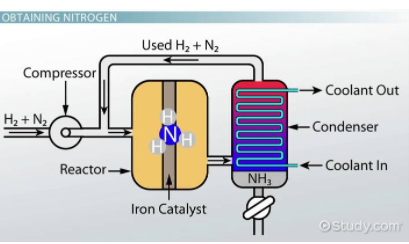

Table of Contents
Toggle7.6 Properties of the Equilibrium Constant
Connecting Equilibrium Constants to Hess’s Law
In Unit 6, we delved into Hess’s Law and how it allows us to determine enthalpy changes for reactions by manipulating and combining different equations. The same principles of adding, flipping, and multiplying reactions apply to the equilibrium constant K, offering us new insights into the behavior of reversible reactions.
Quick Refresher: Hess’s Law
Hess’s Law asserts that enthalpy is a state function, meaning it depends only on the initial and final states of a system, regardless of the pathway taken. Here’s a quick summary of Hess’s Law principles, as they’ll come in handy for understanding equilibrium constants:
- Flipping a Reaction: Reversing a reaction changes the sign of ΔH.
- Multiplying a Reaction: Multiplying the entire reaction by a constant n also multiplies ΔH by n.
- Adding Reactions Together: Adding two reactions yields a sum of their enthalpy changes.
Properties of the Equilibrium Constant K
The equilibrium constant K behaves similarly to enthalpy when reactions are manipulated. Here’s how:
1. Flipping Reactions
When you reverse a chemical reaction, the equilibrium constant K becomes its inverse.
- Original Reaction: For A ⇌ B, the equilibrium constant is K = [B]/[A].
- Reversed Reaction: For B ⇌ A, the equilibrium constant becomes K’ = 1/K.
Example:
Consider the reaction: N₂ + 3H₂ ⇌ 2NH₃, with K = 0.118.
To find K for the reverse reaction: 2NH₃ ⇌ N₂ + 3H₂, simply take the inverse: K’ = 1/0.118 = 8.47.


Image Courtesy of Study.com
2. Multiplying Reactions
When a reaction is multiplied by a constant n, the equilibrium constant is raised to the power of n.
- Original Reaction: For A ⇌ B with K = [B]/[A].
- Multiplied Reaction: For nA ⇌ nB, the equilibrium constant becomes K^n.
Example:
Given the reaction: N₂ + 3H₂ ⇌ 2NH₃, with K = 0.118.
To find K for: (1/2)N₂ + (3/2)H₂ ⇌ NH₃, you multiply the reaction by 1/2.
The new K value is: K’ = (0.118)^(1/2) = 0.343.
3. Adding Reactions Together
When two or more reactions are added to form an overall reaction, their equilibrium constants are multiplied.
- Reaction 1: A ⇌ B with K₁ = [B]/[A].
- Reaction 2: C ⇌ D with K₂ = [D]/[C].
- Combined Reaction: A + C ⇌ B + D has an equilibrium constant of K₁ * K₂.
Example:
Given two reactions:
- Reaction 1: (1/2)N₂ + (1/2)O₂ ⇌ NO, with K₁ = 6.55 × 10⁻¹³.
- Reaction 2: 2NO + O₂ ⇌ 2NO₂, with K₂ = 6.9 × 10⁵.
To find K for: N₂ + 2O₂ ⇌ 2NO₂:
- Multiply Reaction 1 by 2 to get N₂ + O₂ ⇌ 2NO, which changes K to: K’ = (6.55 × 10⁻¹³)² = 4.3 × 10⁻²⁵.
- Add the adjusted reaction with Reaction 2. The equilibrium constant becomes: K = K’ × K₂ = 4.3 × 10⁻²⁵ × 6.9 × 10⁵ = 3.0 × 10⁻¹⁹.
Summary of Equilibrium Constant Properties
Here’s a quick summary comparing K properties with those of ΔH:
| Manipulation | Properties of K | Properties of ΔH |
|---|---|---|
| Reverse Reaction | Inverse of K (1/K) | Flip the sign of ΔH |
| Multiplying by n | Raise K to the power of n (Kⁿ) | Multiply ΔH by n |
| Adding Reactions | Multiply the K values | Add the ΔH values |
Practice Problem
Problem: Using the following reactions, find the equilibrium constant for: N₂ + 2O₂ ⇌ 2NO₂
- Reaction 1: (1/2)N₂ + (1/2)O₂ ⇌ NO, K₁ = 6.55 × 10⁻¹³.
- Reaction 2: 2NO + O₂ ⇌ 2NO₂, K₂ = 6.9 × 10⁵.
Solution:
- Multiply Reaction 1 by 2 to get N₂ + O₂ ⇌ 2NO with K’ = (6.55 × 10⁻¹³)² = 4.3 × 10⁻²⁵.
- Add the modified Reaction 1 to Reaction 2.
The resulting K is: K = K’ × K₂ = 4.3 × 10⁻²⁵ × 6.9 × 10⁵ = 3.0 × 10⁻¹⁹.
Conclusion
By mastering the properties of the equilibrium constant, you’ll gain deeper insight into how chemical reactions behave and respond to changes. This knowledge is crucial for solving equilibrium problems in chemistry!
Recent Comments


7.14 Free Energy of Dissolution


7.11 Introduction to Solubility Equilibria


5.4 Conservation of Linear Momentum


5.3 Open and Closed Systems: Momentum

